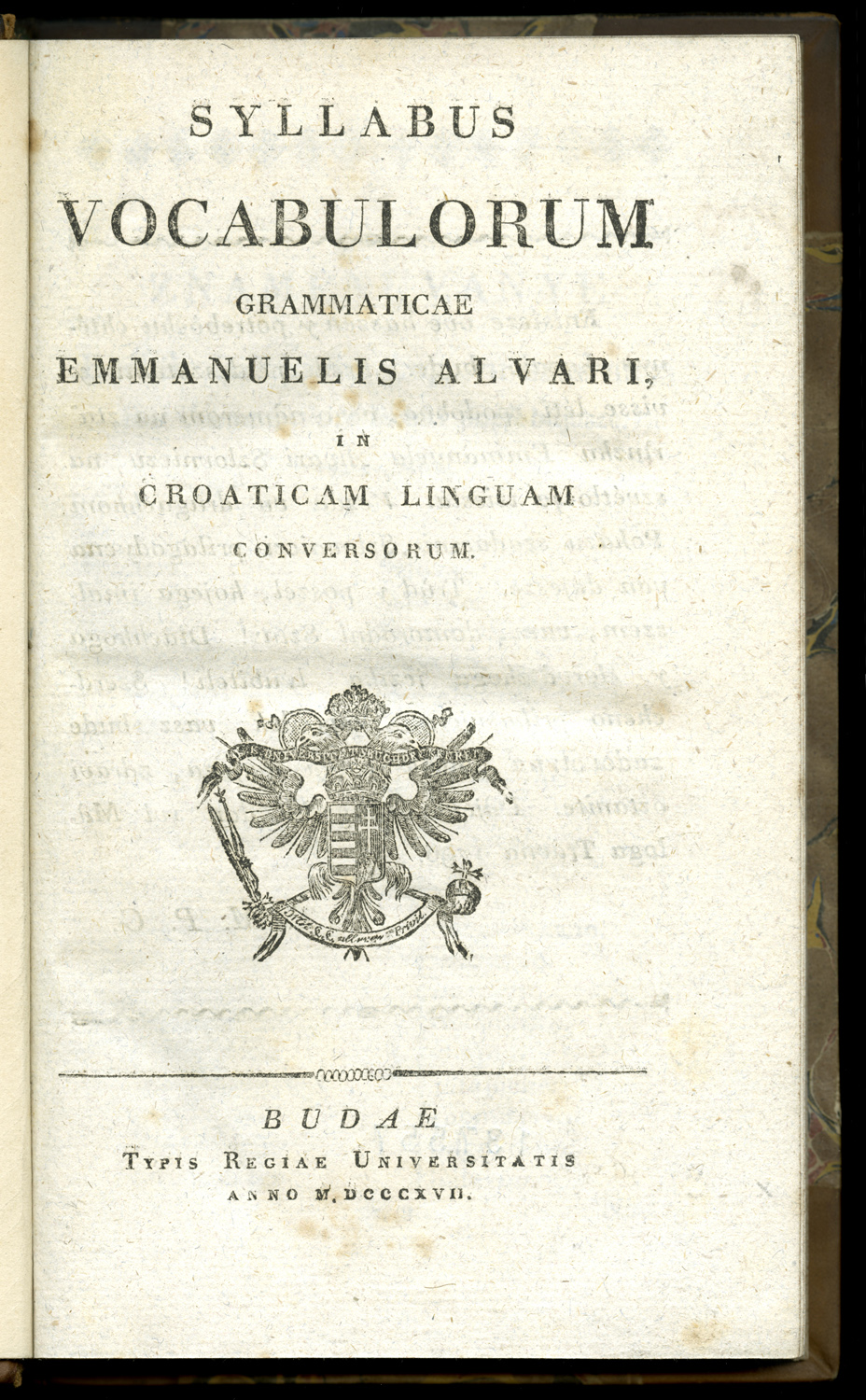5.17 A Long Afterlife
By the end of the sixteenth century, after only twenty five years in use, the grammar textbook of Manuel Alvares had become a symbol of the Jesuit educational system. It was a monument, but not an unchallenged one. Critics variously complained about content, offered different teaching methods, or presented similar material with alternative design strategies. Others attempted to indict the Jesuit order and its highly successful pedagogy. (82) No surprise, then, that Alvares' grammar had a long and controversial afterlife. Conforming to the prescriptions of the 1599 Ratio Studiorum, the Jesuits continued to teach it until modern times. Editions for student use under their direct patronage appeared until the end of the nineteenth century.

Meanwhile, Alvares was translated into thirteen languages and adapted by teachers inside and outside the order for students in England, Mexico, Peru, Slovenia, Poland, the Philippines, Hungary and Japan. In the eighteenth century, grammarians composed several books intended as substitutes for Alvares, but most of them actually reproduced the structure and methods of the Portuguese Jesuit. (83) A partial edition of Book Three, narrowly concerned with drilling students in prosody, had a separate afterlife from the late seventeenth century onwards, especially in Spain. But this drilling book was also published at London in 1707, 1730 and 1735, at Antwerp in 1729, at New York in 1805, and at the Jesuits' Georgetown University in 1831. The Georgetown Jesuits published a student edition of the larger grammar as late as 1895.
In 1859, Alvares's full, scholarly grammar received a handsome edition at Paris, not as a Renaissance text but as a modern reference book for classroom teachers, ostensibly at least reproducing the function of the original teacher's editions of the fifteen seventies. Few textbooks of any age have lasted so long and in such varied form without being relegated to merely antiquarian interest. By the mid-nineteenth century, of course, the whole meaning of Latin grammar study had changed. The Latin course was a battlement from which educational conservatives in many countries defended the classical heritage. A comprehensive, sternly classicizing grammar was a useful tool in the defense of written Latin as a symbol of a culture that claimed to be the continuing synthesis of two millennia of wisdom. (84) Alvares's own goal and that of several generations of humanist grammarians before him had been entirely different -- to recapture classical usage and strip away the perceived falsehoods of the dark millenium between the ancient world and their own. This task they had largely accomplished. Alvares's textbooks were the fullest realization of the humanists' goal, at once rigorously systematic and exclusively classicizing. But they were also denuded of overt Christian evangelical impulses. Jesuit grammar was universalizing and intrumentalizing. It had an ideological meaning as part of triumphant Roman Catholicism in the missions and the defense of strict orthodoxy at home; but it was also useful as a basic tool for anyone who needed or wanted to employ Latin. Putting this humble sixteenth-century tool to the modern conservative use of defending Western culture was a betrayal of its own author's clear notions about the history and meaning of the Latin language.
NOTES
- Open Bibliography
- (82) Deutscher 2002, 1013 provides figures that suggest that even in a diocese like Novara, where the education of priests was dominated by a Jesuit-run seminary, other grammars continued to be used.
- (83) Brizzi 1976, 265; Ballerini 1985, 259-268, 279-282; Colombat 1999, 46; Zwartjes 2000, 240-41; Waquet 2001, 26-36.
- (84) Waswo 1999, 410-412; Waquet 2001, 124-151.